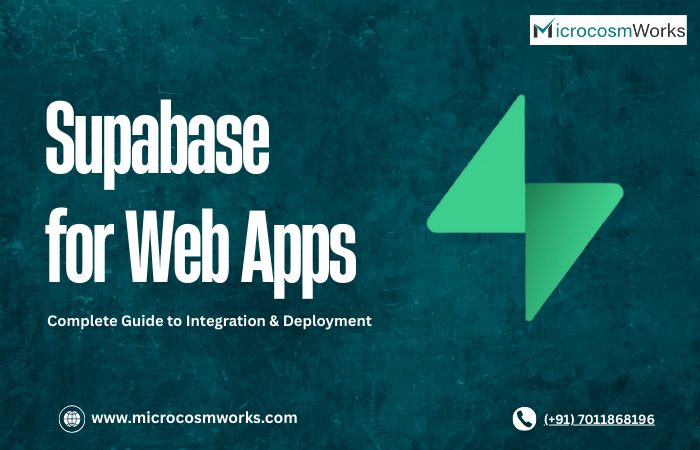Introduction
Supabase is an open-source Firebase alternative that lets you build powerful backends in minutes — with PostgreSQL, Auth, Storage, Edge Functions, and Realtime built-in. Whether you’re building a full-stack app or just need authentication and a database, Supabase is a solid choice.
In this guide, we’ll cover:
- Installing Supabase CLI
- Integrating Supabase with a frontend app (React/TypeScript)
- Creating and deploying Edge Functions
- Managing secrets and environment variables
- Configuring API URLs and keys
- Creating database tables with RLS
Let’s get started.
1. Install Supabase CLI
To get started with Supabase locally, you’ll need the CLI installed.
Install via npm
npm install -g supabase
You can confirm it’s working with:
supabase --version
2. Initialize a Supabase Project
In your project folder:
supabase init
This sets up a local Supabase project with:
supabase/config.toml
supabase/functions/ (for Edge Functions)
supabase/migrations/ (for DB schema)3. Start Supabase Locally (Optional)
If you want to run Supabase locally:
supabase startThis spins up Supabase (DB, Auth, Studio, etc.) using Docker.
To stop it:
supabase stop4. Configure Supabase URL and API Keys
You’ll need your Supabase URL and Anon/Public API Key for frontend integration.
Go to your Supabase Dashboard:
- Navigate to your project > Settings > API
- Copy: Project URL and anon key (for public frontend usage)
Set these in .env
VITE_SUPABASE_URL=https://xyzcompany.supabase.co
VITE_SUPABASE_ANON_KEY=your-anon-key-here
5. Frontend Integration (React + TypeScript)
Install Supabase client:
npm install @supabase/supabase-js
Add the client:
// src/lib/supabase.ts
import { createClient } from '@supabase/supabase-js'
const supabase = createClient(
import.meta.env.VITE_SUPABASE_URL!,
import.meta.env.VITE_SUPABASE_ANON_KEY!
)
export default supabase
Now you can use Supabase to authenticate users, insert data, fetch rows, and more.
6. Creating a Table with SQL
Create a SQL file supabase/migrations/001_create_profiles.sql:
create table profiles (
id uuid primary key references auth.users(id),
full_name text,
created_at timestamp default now()
);
Push the migration:
supabase db push
This will update your Supabase database with the new table.
7. Enable Row Level Security (RLS)
By default, Supabase protects your data using RLS.
Enable it:
ALTER TABLE profiles ENABLE ROW LEVEL SECURITY;
Add a policy:
CREATE POLICY "Users can access their profile"
ON profiles FOR SELECT USING (auth.uid() = id);
8. Create and Deploy Edge Functions
Edge Functions are serverless functions that run close to your users — great for APIs, logic, webhooks, and more.
Create a new function:
Supabase functions new helloIt creates: supabase/functions/hello/index.ts
Add basic handler:
// supabase/functions/hello/index.ts
import { serve } from 'https://deno.land/[email protected]/http/server.ts'
serve((req) => new Response("Hello from Supabase Edge Function!"))
Deploy it:
supabase functions deploy helloYou’ll get a URL like:
https://your-project.functions.supabase.co/hello
9. Setting Edge Function Secrets
To use environment variables securely in Edge Functions: environment variables securely in Edge Functions:
supabase secrets set MY_SECRET=value123
Access it inside your function:
const secret = Deno.env.get("MY_SECRET")
10. Call Edge Functions from Frontend
const res = await fetch(
'https://your-project.functions.supabase.co/hello',
{
method: 'GET',
headers: {
Authorization: `Bearer ${supabase.auth.getSession().access_token}`,
},
}
)
const text = await res.text()
console.log(text)
Conclusion
Supabase makes it easy to spin up a full backend in minutes — with authentication, a SQL database, file storage, serverless functions, and more. You now have everything you need to start building apps with Supabase and take advantage of its full feature set.
Whether you’re building an MVP, a SaaS product, or a learning platform, Supabase is an excellent choice.




